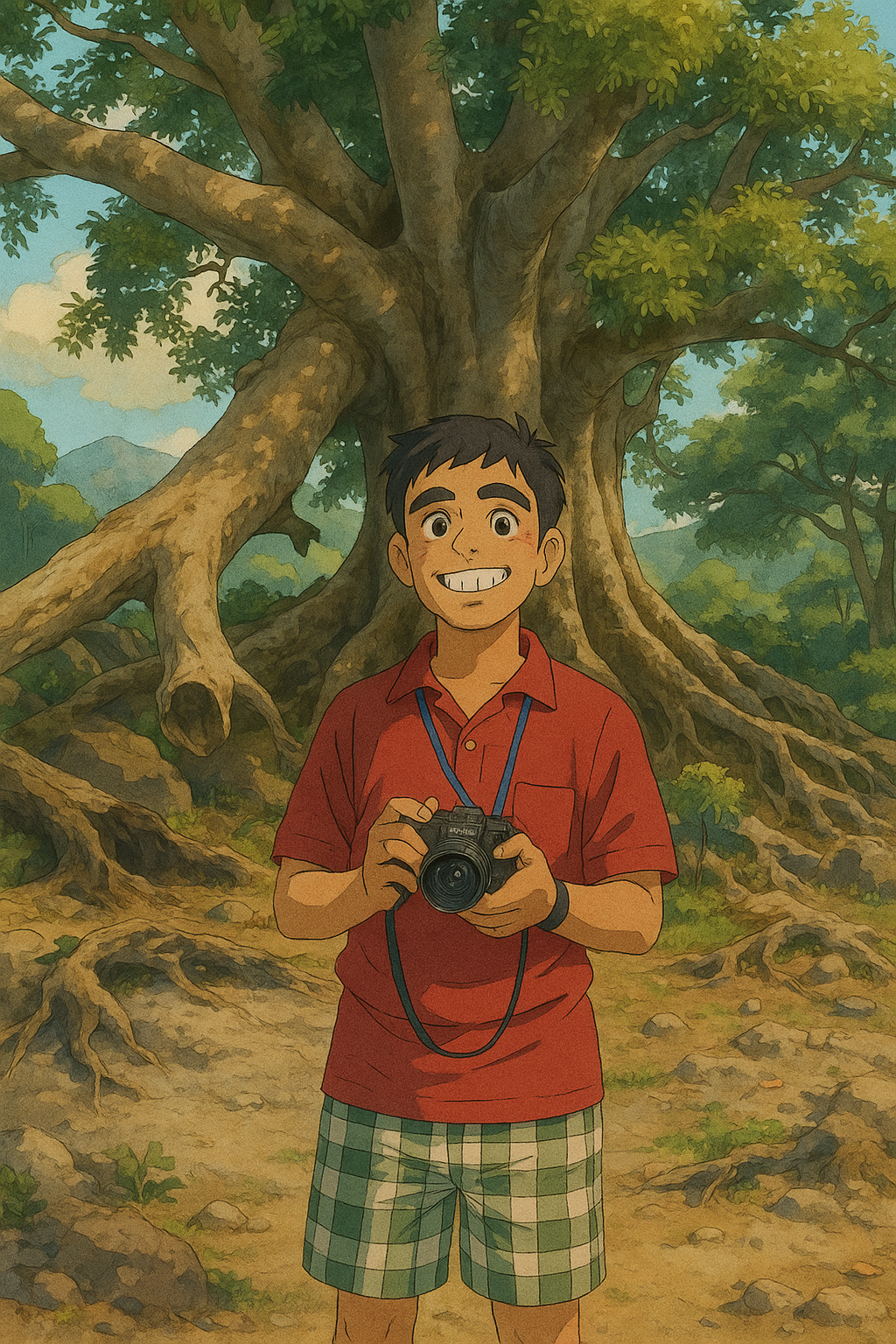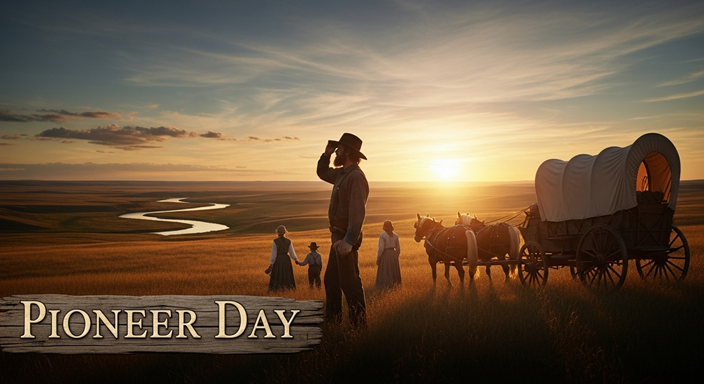Pioneer Day, celebrated every year on July 24th, is one of the most iconic and heartfelt commemorative days in the state of Utah, USA. It honors the bravery, determination, and unwavering faith of the Mormon pioneers who journeyed across treacherous terrain in the mid-1800s to find religious freedom and a new home in the Salt Lake Valley. More than just a historical date, Pioneer Day is a celebration of perseverance, community spirit, and cultural heritage. From parades and reenactments to songs, prayers, and family events, the day symbolizes triumph over adversity and continues to unite communities with shared stories and pride.
History of Pioneer Day
The origins of Pioneer Day date back to July 24, 1847, when Brigham Young, the leader of The Church of Jesus Christ of Latter-day Saints (commonly known as the LDS Church or Mormons), led a group of around 148 Mormon pioneers into the Salt Lake Valley. After years of religious persecution in the eastern United States, including being driven from their settlements in Missouri and Illinois, the pioneers were searching for a safe place where they could freely practice their faith.
Upon seeing the Salt Lake Valley for the first time, Brigham Young famously declared, “This is the place.” This marked the beginning of a new era for the Mormon community and laid the foundation for what would become the state of Utah.
The first official celebration of Pioneer Day took place in 1849, just two years after the initial arrival, and has been observed annually ever since, with only minor interruptions. Originally a solemn commemoration, the event gradually evolved into a broader cultural celebration, reflecting both the pioneer spirit and the community’s growth.
Importance of Pioneer Day
Pioneer Day is important because it commemorates a defining moment in Utah’s history—when a persecuted people found refuge and established a thriving community in an arid and isolated region. This holiday is more than a memorial; it is a recognition of courage, resilience, and the ability to thrive against all odds.
The day honors not just the original 1847 settlers but all pioneers who have contributed to the development of the region, including immigrants, Native Americans, and early settlers of various faiths. It serves as a reminder of how determination and faith can build strong, diverse, and enduring communities.
Significance of Pioneer Day
Pioneer Day holds deep cultural, religious, and historical significance, especially in Utah and among members of the LDS Church worldwide. The day is symbolic of:
-
Religious freedom: The Mormon pioneers’ exodus represents a historic quest for the right to worship freely.
-
Resilience: It highlights the settlers’ ability to survive a long and dangerous journey across the American frontier.
-
Innovation and hard work: Settling the Salt Lake Valley required irrigation, farming, and town-building efforts in a barren desert environment.
-
Community unity: Pioneer Day fosters pride and a sense of shared history among Utahns and Latter-day Saints.
It is also a way of connecting generations—encouraging descendants to honor their ancestors and reflect on the legacy they left behind.
Why is Pioneer Day Celebrated?
Pioneer Day is celebrated to:
-
Commemorate the arrival of Mormon pioneers into the Salt Lake Valley.
-
Honor the hardships and sacrifices endured by the early settlers.
-
Inspire future generations with stories of determination, faith, and community-building.
-
Celebrate Utah’s cultural heritage, not just of Mormon pioneers but of all early settlers who contributed to the state’s development.
-
Reinforce family values, storytelling traditions, and spiritual reflection among communities.
It is a day of remembrance and gratitude, mixed with celebration and forward-looking optimism.
How is Pioneer Day Celebrated?
Pioneer Day is marked with both religious solemnity and joyful celebration. Key activities include:
1. Parades and Reenactments
Cities across Utah hold parades with floats, costumes, and bands. People often dress in 19th-century pioneer attire to reenact the original journey.
2. Fireworks and Festivities
The night sky lights up with spectacular firework displays, especially in Salt Lake City. Communities organize fairs, concerts, and carnivals.
3. Cultural Performances
Folk music, pioneer songs, and theatrical storytelling form an essential part of the day’s activities.
4. Religious Services
Many LDS congregations host special church services or Pioneer Day devotionals, remembering the sacrifices of early Saints.
5. Pioneer Trek Youth Events
Teenagers often participate in “pioneer treks” where they pull handcarts over trails, dressed as pioneers, to experience a portion of the original journey.
6. Community Picnics and Barbecues
Families and neighbors gather in parks for food, games, and fun.
Where is Pioneer Day Celebrated?
Though it is most widely celebrated in Utah, where it is a state holiday, Pioneer Day is also observed in:
-
Idaho and Arizona, especially in communities with a strong LDS presence.
-
Wyoming, along parts of the Mormon Trail.
-
Nevada and California, with pockets of celebrations.
-
Hawaii, where LDS communities host their own events.
-
Church congregations worldwide, where members of the LDS Church organize local Pioneer Day commemorations.
In Utah, businesses, banks, and government offices close, making it one of the few U.S. states with a religious holiday observed officially at the state level.
Citizen Involvement in the Celebration
Citizens play a crucial role in the success of Pioneer Day by:
-
Volunteering in organizing parades, festivals, and public events.
-
Creating floats, sewing costumes, and rehearsing for musical performances.
-
Participating in storytelling events, sharing family pioneer histories.
-
Encouraging youth involvement through educational programs and reenactments.
-
Supporting local vendors, artists, and musicians during fairs and exhibitions.
-
Hosting inclusive events that welcome people of all faiths and backgrounds.
Many Utahns see it as a second Independence Day—a time for both patriotic pride and spiritual reflection.
Theme for Pioneer Day 2025
Theme: “Braving New Frontiers – Honoring Our Roots, Building Our Future”
This year’s theme encourages people to draw inspiration from the perseverance of the pioneers while recognizing the ongoing challenges and achievements of modern communities. It emphasizes resilience, unity, and legacy.
Key goals under this theme include:
-
Highlighting modern-day pioneers—immigrants, innovators, social leaders.
-
Encouraging sustainability and community building in rural and urban Utah.
-
Promoting interfaith and intercultural dialogue.
-
Celebrating diverse contributions to Utah’s growth beyond religious lines.
10 Famous Quotes for Pioneer Day
-
“This is the place.” — Brigham Young
-
“Pioneers not only blaze trails—they build bridges to the future.” — Unknown
-
“Courage is the power to let go of the familiar.” — Raymond Lindquist
-
“Faith is taking the first step even when you don’t see the whole staircase.” — Martin Luther King Jr.
-
“The pioneers of today prepare the world of tomorrow.” — Gordon B. Hinckley
-
“Endurance is one of the most difficult disciplines, but it is the one who endures that the final victory comes to.” — Buddha
-
“We stand on the shoulders of those who came before us.” — Unknown
-
“You don’t become a pioneer by waiting—step into the unknown.” — Unknown
-
“Every great journey begins with a brave decision.” — Anonymous
-
“Hardship often prepares ordinary people for an extraordinary destiny.” — C.S. Lewis
Frequently Asked Questions (FAQs)
Q1: What is Pioneer Day?
A: Pioneer Day is a state holiday in Utah, celebrated on July 24th to honor the arrival of Mormon pioneers in 1847.
Q2: Who started Pioneer Day?
A: It was initiated by members of the LDS Church, led by Brigham Young, following their arrival in the Salt Lake Valley.
Q3: Is Pioneer Day a public holiday?
A: Yes, it is a public holiday in Utah, with state offices, schools, and most businesses closed.
Q4: Is Pioneer Day only for Mormons?
A: While it originated from LDS history, it is celebrated by all Utahns and increasingly recognized by people of various backgrounds.
Q5: How do people celebrate Pioneer Day?
A: With parades, concerts, fireworks, cultural shows, reenactments, and community gatherings.
Q6: Why is July 24 significant?
A: It marks the date in 1847 when the first group of Mormon pioneers entered the Salt Lake Valley.
Q7: Are there Pioneer Day events outside Utah?
A: Yes, particularly in neighboring states and LDS communities around the world.
Q8: Is there a 2025 theme for Pioneer Day?
A: Yes, the 2025 theme is “Braving New Frontiers – Honoring Our Roots, Building Our Future.”
Q9: What values does Pioneer Day promote?
A: Faith, perseverance, community spirit, resilience, innovation, and inclusivity.
Q10: Is Pioneer Day similar to the Fourth of July?
A: While both involve parades and fireworks, Pioneer Day is more focused on local heritage and religious history.
Conclusion
Pioneer Day 2025 is not just a commemoration of the past; it’s a vibrant reminder of how courage, conviction, and cooperation can shape a better future. Whether through cultural performances, spiritual reflection, or joyful celebrations, the day binds generations together under the common banner of progress, unity, and remembrance. In a world still facing new frontiers—social, environmental, or spiritual—Pioneer Day stands as a timeless testament to the human spirit and the power of community.
Let the courage of 1847 inspire the actions of 2025 and beyond.
!!! Stay Updated !!!
👉 Follow us on 👈
📰 Trending News | 📢 Important Alerts | 💼 Latest Jobs
🔵 LinkedIn | 🔵 Threads | 🔵 Facebook |🔵 Instagram | 🔵 Tumblr
📱 Follow us daily & never miss an update 📱

Someshwar Chowdhury is a seasoned Chartered Mechanical Engineer, Educator, and Technology enthusiast with over a decade of experience in engineering education and consultancy. Someshwar is also an active blogger, trainer, and member of professional bodies like ISHRAE and GREEN ADD+. When not teaching or consulting, he enjoys blogging, music, and exploring green technologies.
Discover more from Today's Significance
Subscribe to get the latest posts sent to your email.
